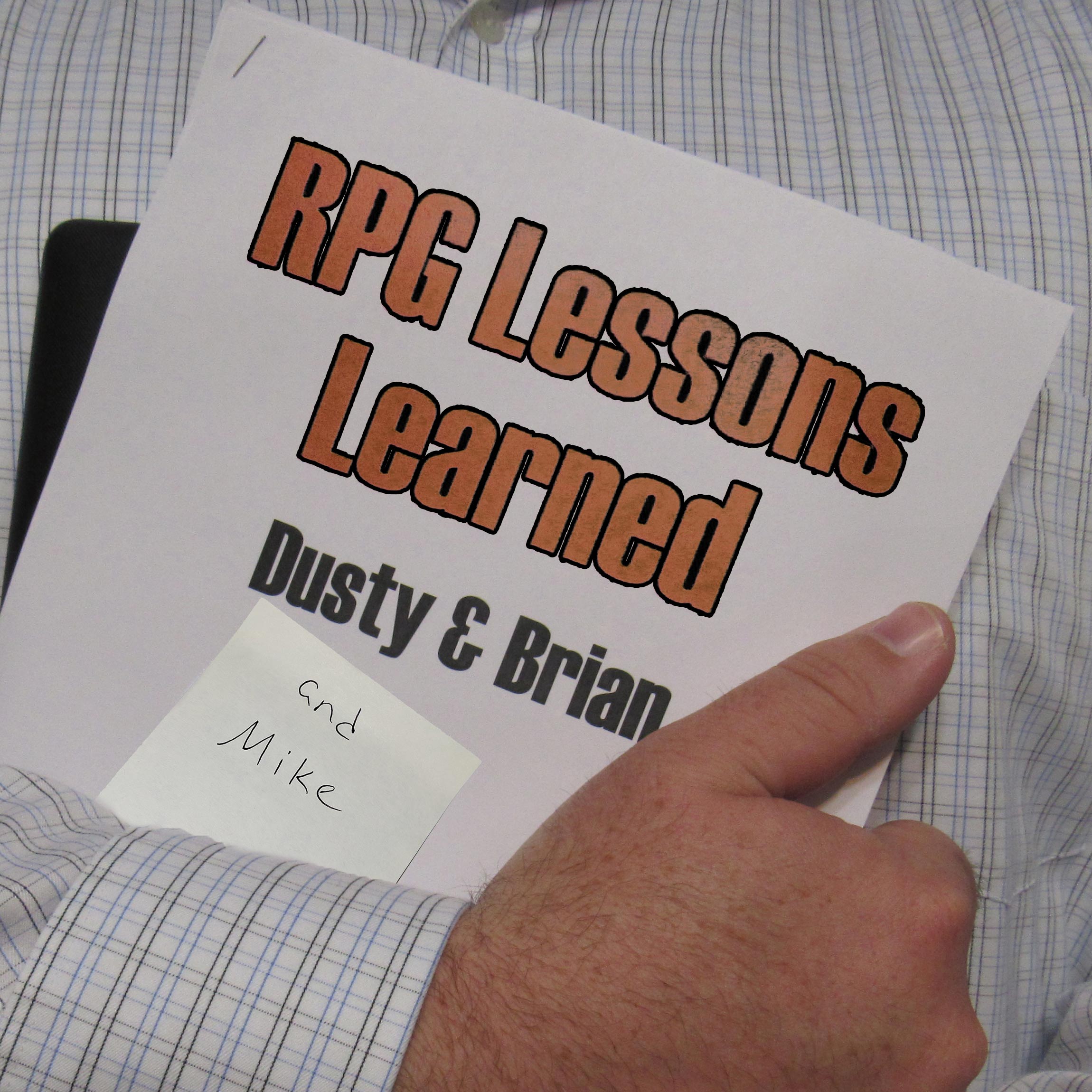RPG Lessons Learned 094 – Blood & Honor, Pt. 3 SWOT Analysis
Description
This week, Dusty and Mike explore their experiences with Blood & Honor by enumerating its Strengths, Weaknesses, Opportunities, and Threats.
SWOT
SWOT is a framework for analyzing intangible concepts… processes, teams, and… in this case… games. When I say framework… SWOT is just ONE axis more complex than a Pros/Cons list.
SWOT stands for Strengths, Weaknesses, Opportunities, and Threats.
Picture a two-by-two grid. On one axis, you’re looking at Good and Bad. On the other axis, you’re looking at Internal and External.
Good and Bad are intuitive. These are your Pros and Cons. But Internal and External are what makes this just a bit more complex than a Pros and Cons list. Internal and External force you to consider whether the Pro or Con you’re listing is inherent to the concept itself, or if it’s a result of some outside influence.
The internal good are the concept’s Strengths.
The internal bad are the concept’s Weaknesses.
The external good are the concept's Opportunities. And this bears emphasizing. Often in business speak, “opportunity” is a euphemism for “problem.’ That’s not the case here. Opportunities in SWOT are positive! They’re positive things outside the concept that benefits the concept. Favorable conditions, you might say.
Finally, the external bad are the concept’s threats.
You can see how SWOT is a great way to have a COMPLETE conversation about a concept. It forces you to think more deeply about what’s going on.
But SWOT is qualitative… it is NOT quantitative. There’s no SWOT score. You can’t count up the pieces of feedback. Just like a pros/cons list, there will always be cons, no matter how great a concept is. So you have to qualify them yourself.
In fact, as you listen to us capture our feedback, you may disagree with where we put it! We may capture a Threat that you think is a Weakness! You might be right! We might both be right!
So let me emphasize that this is a tool to ensure we have a thorough discussion! Not a quantifiable right/wrong scorecard.
BLOOD & HONOR SWOT
Good
Bad
Internal
Strengths
Clan, then Character: Unique to roll a clan, then character.Focus on objectives/desires before you start rolling characters.
Privilege: Interesting concept.
Risks and Wagers: Simplistic mechanics, but interesting.
Aging: Unique mechanics for aging.
Weaknesses
Players: Only a certain type of (mature) player...
Overly-Mechanical: So much referencing, reading, and transcribing.
Character Sheet: Not at all up to the task.
Misogyny: Chapter on “Women.”
External
Opportunities
L5R 5e Launch: Lot of attention of Samurai Games.
Ninja Turtle / Anime Generations: Big audience for Eastern stories in the west.
Threats
Bookkeeping: Collaboration is only possible with a lot of bookkeeping.
Identity Politics: Dog-whistles, misogyny, n-word.
CONCLUSION
Look, I screwed this game up. I gave the reins to Mike TOO much.
But, as you’d expect with a FATE-style game, it’s mechanical as hell. There’s too much to refer to during play. And too much to transcribe.
And the game is… frankly… problematic. I kind of hate that word. I think it’s over-used. But this isn’t a game I’d feel comfortable asking people to play.
More Episodes
Published 07/12/23
Published 02/17/23
Published 01/11/23


